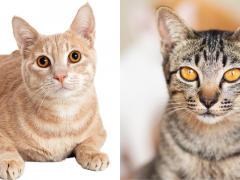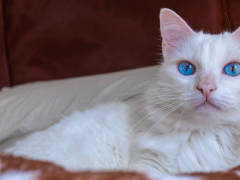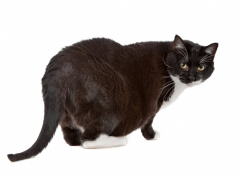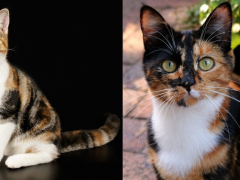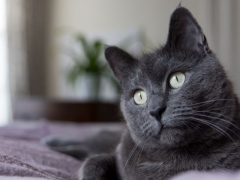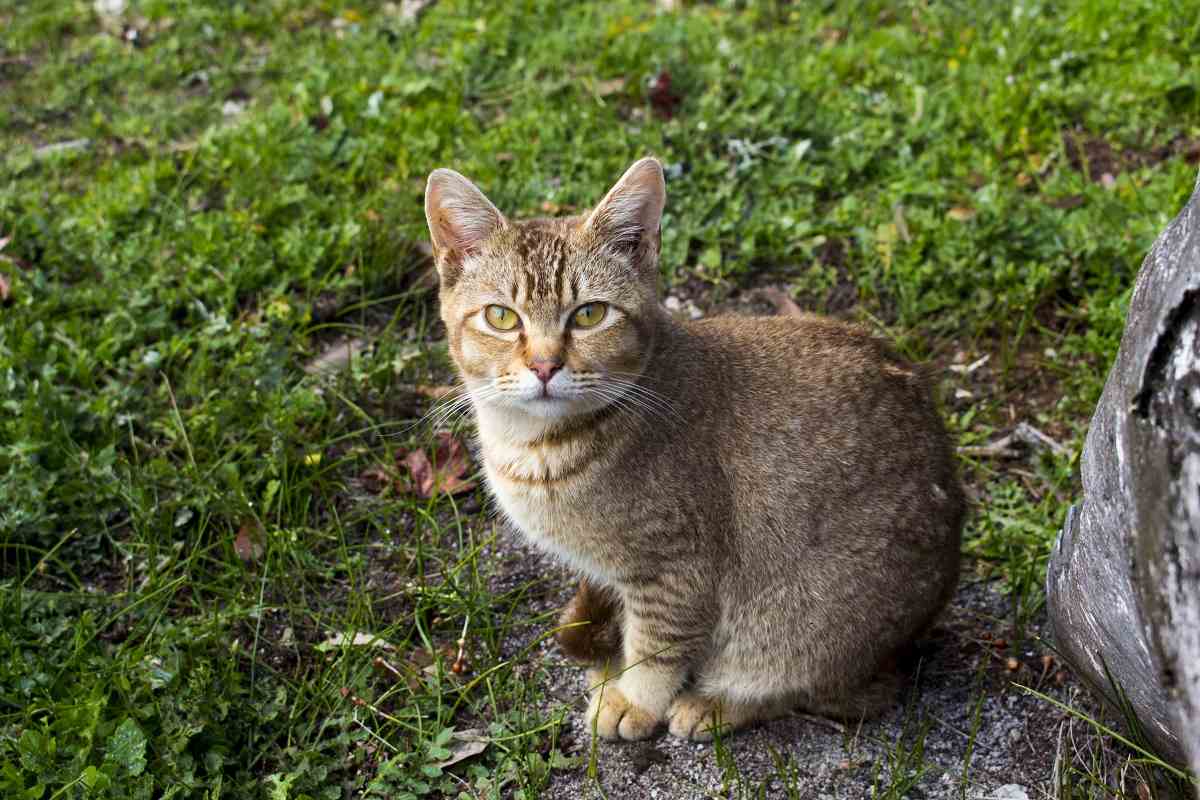
alybaba / Shutterstock.com
You might not know that cats with ticked coats, such as Abyssinians, are actually tabby cats. Most of us think of tabby cats as having distinct stripes all over their bodies, but there are also four other tabby patterns, one of which is ticked tabby.
Ticked tabbies have multiple colors on each strand of hair, which creates the ticked pattern they’re known for. Like other tabby cats, they have “M” markings on their foreheads, often have stripes on their faces, and sometimes have faint stripes on their tails, legs, or stomachs known as “ghost striping.”
- 1. Ticked Tabby Is a Coat Pattern With Agouti Hairs
- 2. They Sport the Classic Tabby “M” on Their Foreheads
- 3. Many Ticked Tabbies Have “Ghost Stripes”
- 4. The Gene for Ticked Tabbies Is Dominant
- 5. All Abyssinian Cats Are Ticked Tabbies
- 6. The Ticked Tabby Pattern Also Occurs in Other Breeds
- 7. Ticked Tabby Cats Often Have Eye Markings
Learn more about ticked tabbies and tabby cat facts as we explore seven things you probably didn’t know about the ticked tabby cat.
1. Ticked Tabby Is a Coat Pattern With Agouti Hairs
Many believe that tabby cats are their own breed, but this word actually describes a coat pattern seen in many breeds of cat, as well as mixed breeds. The ticked tabby is one of five tabby patterns: ticked tabby, classic tabby, mackerel tabby, patched tabby, and spotted tabby. While the tiger stripes of the mackerel tabby are easy to identify, ticked tabbies are less recognizable as tabby cats.
They have agouti hairs, which means that each strand of hair is banded with alternating light and dark colors. This creates a ticked appearance, which can be subtle or prominent.
2. They Sport the Classic Tabby “M” on Their Foreheads
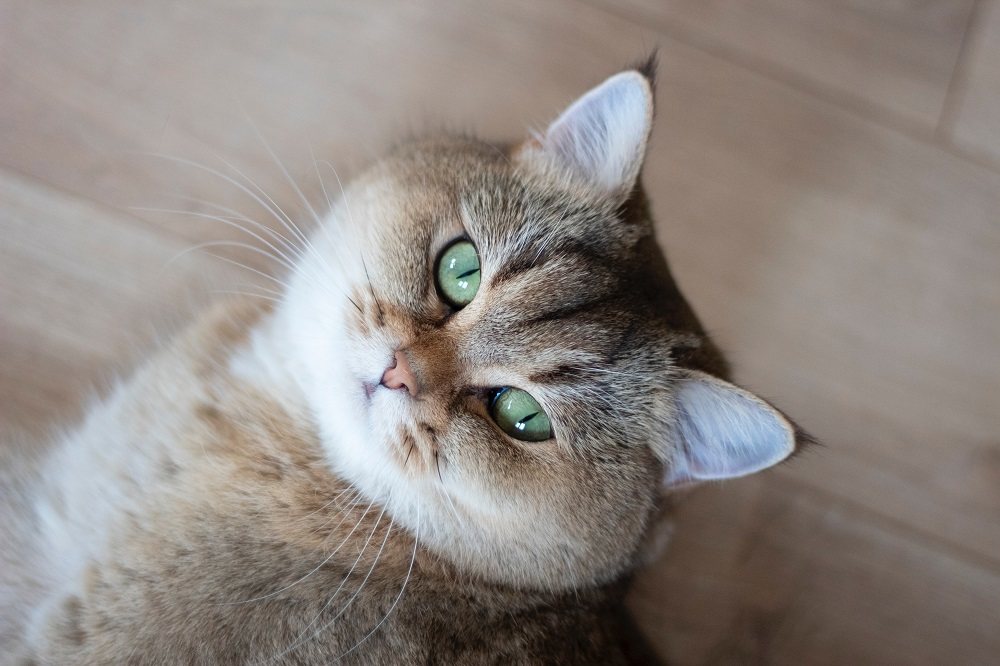
Like all tabbies, ticked tabby cats have an “M” marking on the forehead. yarm_sasha / Shutterstock.com
Ticked tabbies look quite different to other tabby types, but they still have the “M” marking on their foreheads. Many cultures have stories of how that “M” came to be, from the Christian tale of Mary petting a kind tabby cat on the forehead shortly after the birth of Jesus, to the ancient Egyptian belief that the “M” marking was a sacred symbol.
There’s also the Islamic tale of the Prophet Muhammed, who was saved from a venomous snake by his cat Muezza. The “M” marking is said to honor Muezza’s efforts. Science tells us that the “M” marking is caused by the tabby gene.
3. Many Ticked Tabbies Have “Ghost Stripes”
Ghost stripes are faint stripes that can sometimes be seen on a ticked tabby’s legs, tail, stomach, or face. These might be seen only in certain lighting or by looking closely. The stripes will closely match the primary fur color, but a shade darker. Some ticked tabbies also have darker color running down their spines, which tends to be more prominent than their ghost stripes.
4. The Gene for Ticked Tabbies Is Dominant
The ticked tabby gene is dominant, so ticked tabby cats only need to inherit the trait from one parent. Recessive genes must be inherited by both parents to make an appearance.
If a cat has both a ticked tabby and a mackerel or classic tabby gene, they will have ticked tabby fur. However, these cats will have more stripes than cats with two ticked tabby genes.
5. All Abyssinian Cats Are Ticked Tabbies
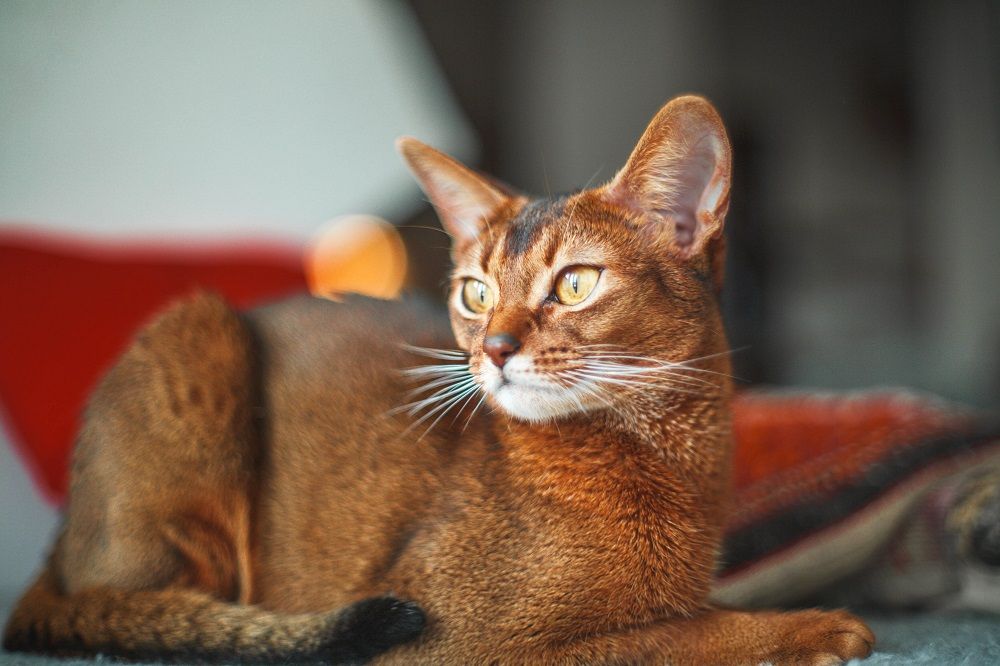
The Abyssinian has a beautiful ticked tabby coat. BRAIN STORM / Shutterstock.com
The Abyssinian is one of the most popular ticked tabby breeds. According to the Cat Fanciers’ Association, an Abyssinian’s ticking should be “distinct and even.” Deeper colors and prominent ticking are desirable for cat shows.
Their coats are ruddy (brown ticked with black), cinnamon (red and brown), blue (beige ticked with gray), or fawn (beige ticked with brown). Abyssinians have lean but muscular bodies, wedge-shaped heads, and large ears. Their coats are short and smooth, and their eyes are gold or green.
6. The Ticked Tabby Pattern Also Occurs in Other Breeds
Abyssinians aren’t the only ticked tabby purebreds. This coat pattern can also be seen in American Shorthairs, British Shorthairs, Chausies, Oriental Shorthairs, Singapuras, Somali, and mixed-breed cats.
If you adopt a cat and you aren’t sure of their breed, they’re probably not a purebred. They’re more likely a domestic shorthair or domestic longhair, which are fancy terms for mixed-breed cats. Unlike dogs, most domestic cats don’t have a primary breed but instead have a mix of many breeds in their DNA. In dogs, this is sometimes referred to as a “super mutt.”
7. Ticked Tabby Cats Often Have Eye Markings
In addition to the distinctive “M” marking on the forehead, many ticked tabby cats have bold eye markings. Sometimes referred to as “mascara lines” or “eyeliner,” these dark, dramatic markings outline a cat’s eyes. Cats with other tabby pattern variations can also have dark eye markings, but they are particularly common in ticked tabbies.
-
https://www.ncbi.nlm.nih.gov/pmc/articles/PMC3709578/
-
https://cfa.org/wp-content/uploads/2019/06/abyssinian-standard.pdf
